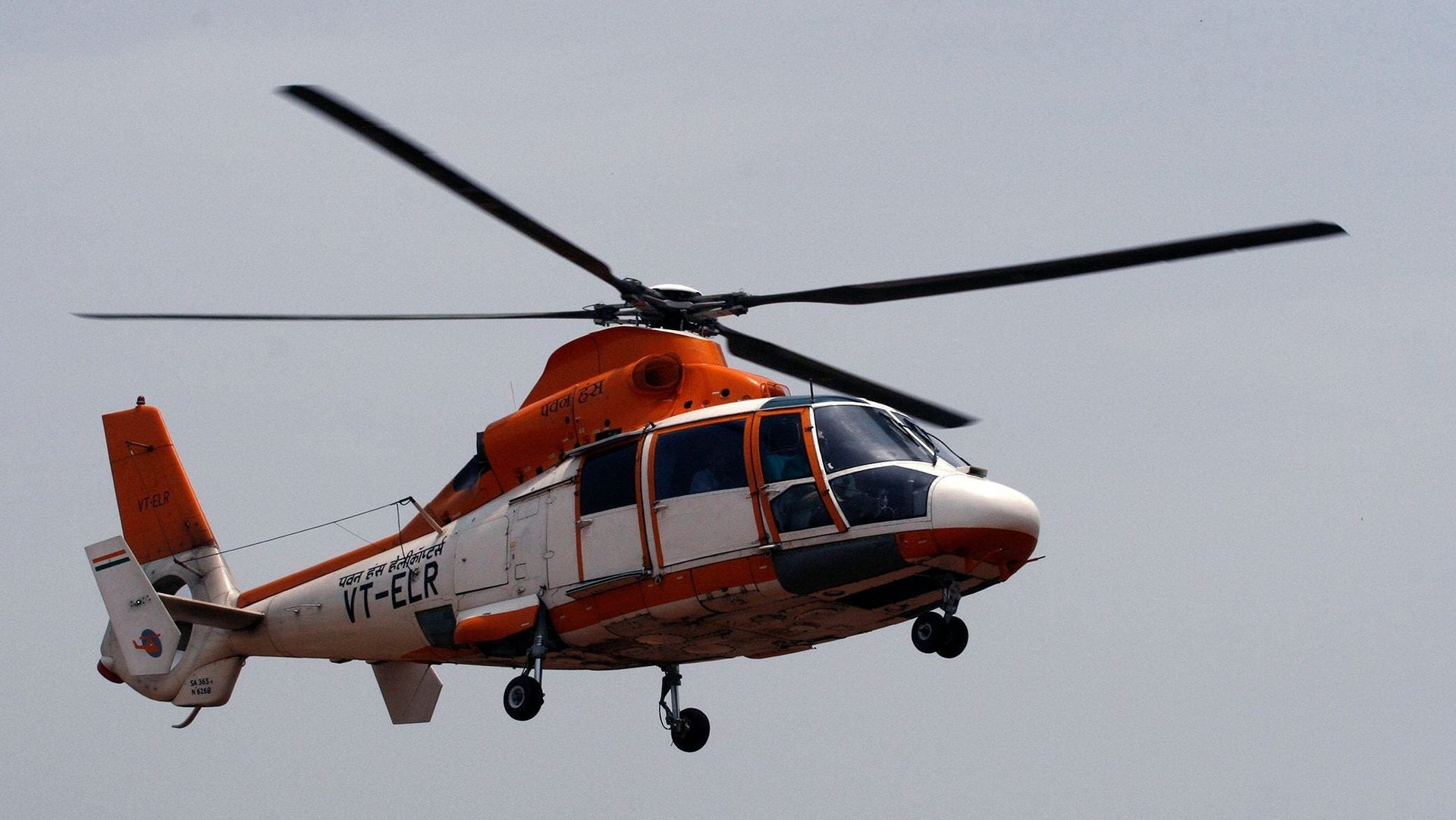Why isn’t anybody buying India’s biggest helicopter company?
Another state-owned Indian aviation company may be going the Air India way.


Another state-owned Indian aviation company may be going the Air India way.
Just four months after the state run carrier’s disinvestment plan went belly up, Pawan Hans, another government air transport firm, may have evoked a lukewarm response from buyers.
While Air India’s failure was due to its huge debt pile and operational losses, the country’s biggest helicopter service provider by revenue is actually profitable.
The government’s been trying to sell its majority stake in Pawan Hans since last year. Bidding for 100% ownership of the company closed yesterday (Sept. 19).
But with the Indian aviation sector in distress, hopes aren’t high. “I don’t expect many major players going after this (Pawan Hans) at this point,” said Ashish Nainan, research analyst at CARE Ratings.
Selling once, selling twice
This was the government’s second attempt to part ways with Pawan Hans, established in 1985.
In October 2017, it invited bids for the 51% stake it owns in the company, which has been profitable in the five years up to financial year 2017.
At the end of the first round of bidding, the ministry of civil aviation said it had received only one offer, forcing the government to restart the process afresh this April.
Last month, the sale was bumped up to a 100% stake in Pawan Hans, after the state-owned Oil and Natural Gas Corporation (ONGC) also agreed to sell its 49% stake in the chopper firm.
However, a key criterion—a minimum net worth of Rs500 crore ($69.38 million) for bidders—was not updated. At Rs985 crore, Pawan Hans itself has a net worth close to double that value.
Pawan Hans owns 43 helicopters, more than its Indian competitors like Global Vectra and Heligo Charters, and earns a steady income from state governments and oil majors in India. It provides helicopter services to ONGC and other state-owned energy firms for their off-shore operations, and to remote and hilly regions of India such as the northeastern states, and the archipelagos of the Andaman and Nicobar Islands and Lakshadweep.
Privatisation or IPO
Yet, buyer interest has been rather low.
“There aren’t many companies in India that can get into the general aviation market,” said Dhiraj Mathur, partner at PwC. The sale’s timing, coming when the Indian aviation sector is bleeding, isn’t the best either.
“There should have been no urgency to sell a profitable company at this point, when the aviation sector is in distress and fuel prices are high,” Nainan said.
According to Crisil Research, the Indian aviation market is still nascent, with penetration at 0.04 air trips per capita per annum. But the untapped potential also reflects a lack of infrastructure, Nainan said. “If a private entity were to buy Pawan Hans, it wouldn’t really find much infrastructure to operate with.”
Instead, disinvestment could have been more easily achieved through an IPO launch, he added. “The union government listed quite a few loss-making companies like HAL (Hindustan Aeronautics Limited) last year, which weren’t the best of companies to list. They could have rather exited the helicopter business by listing Pawan Hans,” he said.